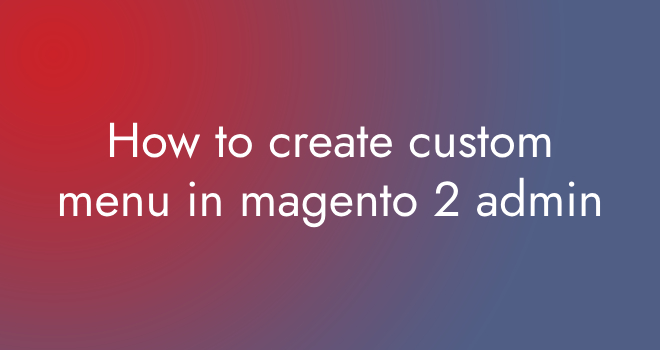Here’s how you can create a custom admin menu in Magento 2:
Step 1: Create a Magento 2 Module
You want to create a custom module to define your custom admin menu. You can use the following command to create a brand-new module:
php bin/magento module:create Explore_MenuStep 2: Define Your Admin Menu
In your custom module, navigate to Explore_Menu and so Explore/Menu/etc/adminhtml/menu.xml and define your admin menu there. Here’s an instance of how you may shape the menu.Xml report:
<?xml model="1.0"?>
<config xmlns:xsi="http://www.W3.Org/2001/XMLSchema-instance" xsi:noNamespaceSchemaLocation="urn:magento:module:Magento_Backend:and so on/menu.Xsd">
<menu>
<add id="Explore_Menu::first_level" title="Custom Extensions" module="Explore_Menu" sortOrder="10" resourse="Magento_Backend::content" />
<add id="Explore_Menu::secound_level" title="Banners" module="Explore_Menu" sortOrder="0"
parent="Explore_Menu::first_level" resourse="Magento_Backend::content" />
</menu>
</config>identity: Unique identifier to your menu.
Title: The label of your custom menu.
Module: Your module’s call.
SortOrder: The position of your menu item relative to others.
Parent: This attribute specifies the parent menu item under which your second-level menu item should be nested. In your example, it’s set to “Explore_Menu::first_level,” which means it’s a child of another menu item named “first_level” within your module’s menu.
Resource: The resource attribute defines the permission or ACL resource associated with this menu item. In your example, it’s set to “Magento_Backend::content.” This means that users must have the “Magento_Backend::content” ACL resource to access this menu item.
Step 3: Create Controller and Action
You need to create the controller and movement noted in the menu.xml file. Create the corresponding documents to your module’s Controller listing.
Step 4: Register Your Module
Register your module in Magento by jogging:
php bin/magento setup:upgradeStep five: Clear Cache
Clear the cache to make your changes visible:
php bin/magento cache:flushNow, you should see your custom admin menu inside the Magento 2 admin panel below the specified determined menu.


Remember to replace Your_Module_Name, Your_Module::custom_menu, Custom Menu, and the action together with your real module
call, menu identifier, identify, and controller action.
Once you have completed these steps, you’ll have correctly created a custodm admin menu in Magento 2. Users with the
appropriate permissions will be able to get right of entry to the menu and have interaction with the associated controller movements.

